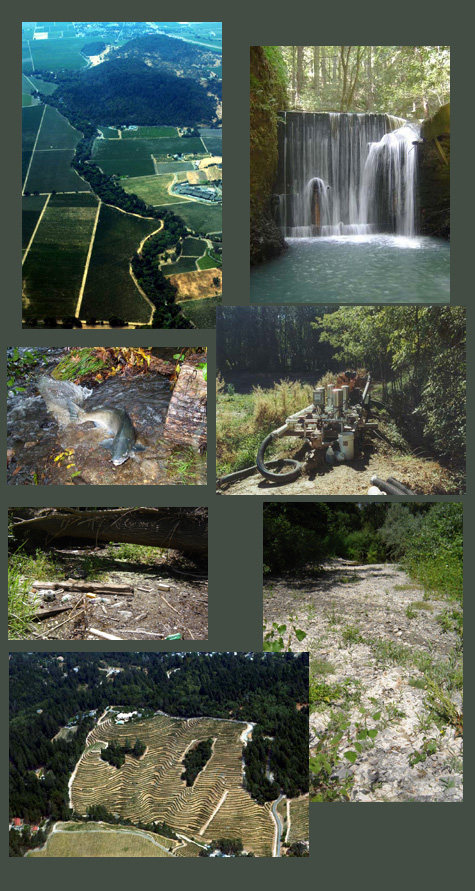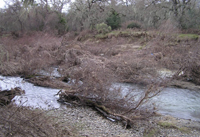Napa River
The Napa River was once famous for salmon and steelhead fishing, but the river has fallen into very poor health. Tributaries on the east side of the Napa Valley were dammed in the 1950s and 1960s for municipal water supplies, which cut off access to over one hundred miles of habitat and reduced summer base flows that supported rearing. Expansion of wineries and over-use of surface and groundwater has caused lower reaches of tributaries and the mainstem Napa River to go dry every summer or to become so stagnant that few viable habitats for salmon and steelhead rearing remain. For information on how to help save the Napa River see the Institute for Conservation, Advocacy, Research, and Education (ICARE) or learn more by reading comments on the Napa River TMDL report.

